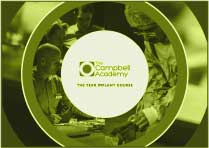A short series on the Business of Dentistry: Part 5 - Team (Leadership and HR)


In this little series of blogs and stories about the business of dentistry over Christmas 2023, we've talked about vision setting a little bit, a little bit about finance and the financial dashboard, and then about the fact that marketing and sales are the same thing before we finally got into the main operational part of your business, which is, in effect, human resources, which is almost certainly leadership.
Leadership became a popular subject for us to discuss, and people talked about styles of leadership we used to drive a business forward and bring the team with us.
Leadership has always been a very simple concept to me.
It just example setting.
Building a team is hard and fluid and always changing and challenging for one reason or another.
It's hard to have any size of team where someone is not having a sad personal crisis, someone else is having performance issues for one reason or another, or someone else is simply not really part of the team but still managing to stay where they are.
And so, if we see leadership as an example-setting exercise and we're clear on the vision and direction of our business, all we need to do is set an example along the lines of our vision. We should (hopefully, all things being equal) attract people who are attracted to that vision and happy to learn from our example.
It means you have to be the person you think you should be, even when you think no one is looking.
Leadership is about making those difficult decisions based on your values at the right time, with empathy and sympathy, but with strength and clarity and speed and direction.
You can read as many leadership books as you like, and you can try to practise different styles, but as a great friend of the practice, John Gibson taught us, first, you need to know yourself to be able to lead yourself and only then may you get the privilege of leading others.
The first thing to do with your human resources is to know who you are, what your advantages and disadvantages are, what your strengths are, what your feelings are and what gaps you need to plug within your team to make up for your deficiencies.
First, you need to know yourself, then you need to lead yourself, that means you need to set the example.
If you want everyone to be there 20 minutes before the start of work, then you have to be there 20 minutes before the start of work every day.
If you want your staff to be caring and compassionate, even in a crisis or when someone else is upset, you must act the same way.
If you want people not to steal, then don't steal.
If you want people to be grateful, then you, too, should always be grateful.
Once you have done this, you can start on the transactional and transformational aspects of human resources.
And so in transactional, everyone has to have a contract, and if someone is not doing their job correctly or they indulge in misconduct, you have to be strong and secure.
But that should only be 10% of your human resources; 90% of it can be transformational, enabling other people to be their best to find their best path and to help you realise the vision that you want for you and your team and for your clients, customers, patience or whatever it is, you look after.
Once you have managed to set your vision and your values and you understand where you and your team are trying to get to in the next three years, then you can set up a financial model for this and base your dashboard around that model.
You can then start to market and try to convert people to take up the treatments that you want to offer (the products), and then, once you have that system developed, you can look at leadership and your human resources or human asset management.
If you have a business that already exists, then you can return to the start and start to redesign your business from the vision forward.
If you are setting up a business and haven't started, this is the ideal framework.
Even if you're an associate working in practice whose aspirations are to make your associate position more profitable, more enjoyable or more flexible, you can also apply all of these models to that, and then you can get moving to help yourself to realise a better career and a better way of life to a structure that's repeatable and predictable.
Blog Post Number - 3670




Leave a comment